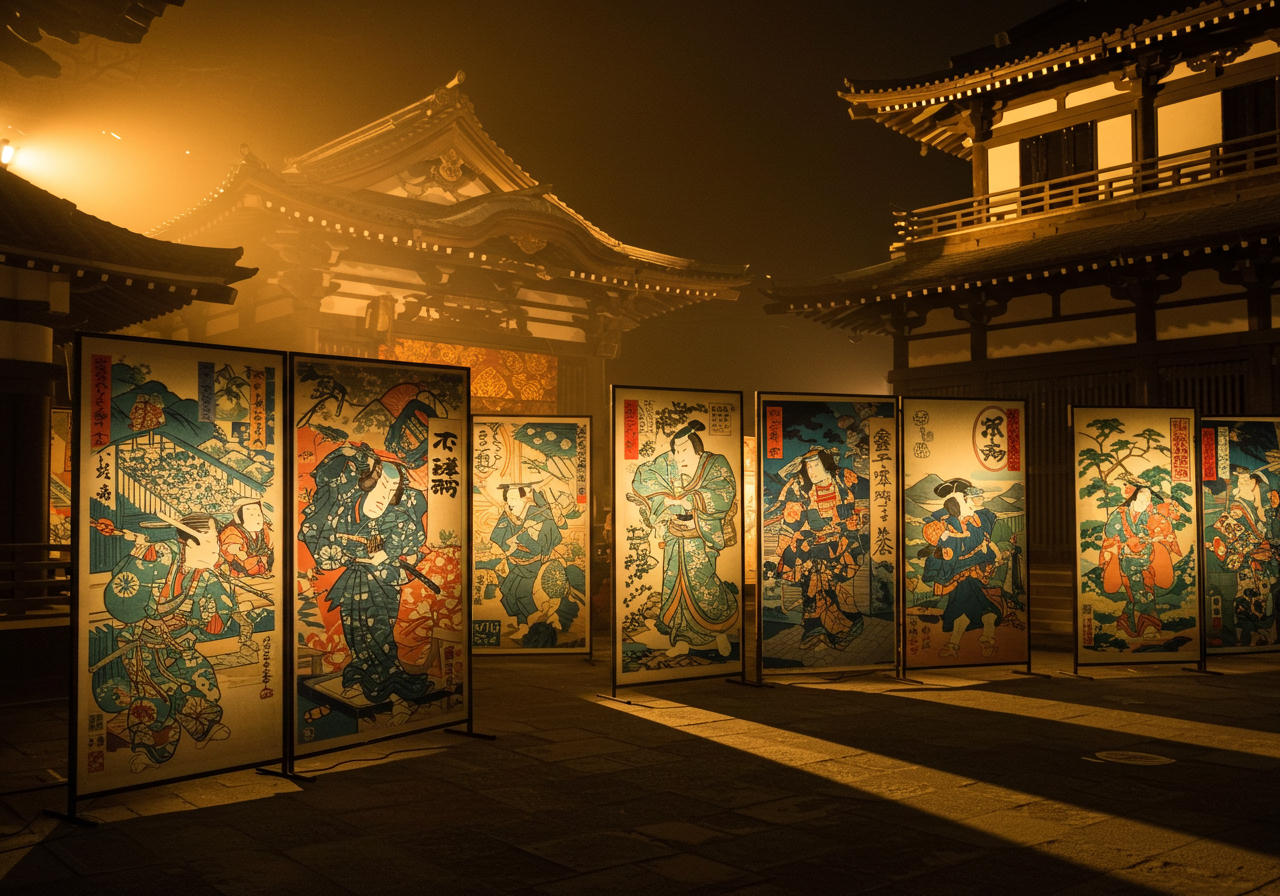
The “Why” Beyond the Wave
Do you remember the jolt you felt the first time you saw The Great Wave at London’s Tate or New York’s Met? And yet, little is said about the vast current it belongs to — ukiyo-e, the floating-world prints of Edo Japan. As a Japanese writer, I have long felt the frustration of that gap: the masterpiece is famous, but its context remains obscured. So let’s unravel, from a contemporary vantage point, the mechanics and magic of the “pop prints” that once captivated Edo’s citizens.
Ukiyo-e: The Print Medium of “Edo Pop”
Literally “Pictures of the Floating World,” ukiyo-e captured the whirl of entertainment, fashion, and travel — like a visual weekly magazine. Woodblock production made each sheet affordable; new “issues” flew off stalls outside teahouses and kabuki theaters. Edo, a metropolis of over one million, devoured fresh designs that passed instantly from hand to hand. The information explosion sparked by print was not Gutenberg’s privilege alone.
A Four-Person Relay: The Artisan Stack
The making of ukiyo-e was a relay of specialization. The artist sketched the design, carvers etched separate blocks for every color, printers layered pigments onto paper, and publishers managed distribution — much like a modern startup’s product team. A single print might require a dozen hues and twenty blocks, yet thousands of identical impressions reached the market. Edo artisans had already shattered the equation of “art equals one-of-a-kind.”
Prussian Blue and the Color Revolution
In the early nineteenth century, a synthetic pigment from Berlin — Prussian Blue — arrived in Japan and became bero-ai. The deep indigo of Hokusai’s Thirty-Six Views of Mount Fuji owes its power to this chemical dye. With durability and brilliance beyond plant-based colors, it lent fresh shadows to spray and mountain ridge, flooding the market in a true Blue Ocean moment. A global supply chain had just upgraded Edo’s color sense.
The Moment Ukiyo-e Shook Europe
In the 1860s, prints used as packing filler for ceramics reached Paris — and stunned painters. Van Gogh echoed their bold outlines; Monet built a Japanese bridge in his garden. Thus dawned Japonisme. Flat color planes, offbeat perspectives, scenes of everyday life: Impressionism and Art Nouveau cannot be told without ukiyo-e. A humble wrapping paper rewrote Western art history, a reversal still thrilling to recall.
A Living DNA — from Manga to NFTs
Contoured characters, flat color blocks, panel-like compositions: the visual grammar of manga and anime traces straight back to ukiyo-e. Today, AI “ukiyo-e remix” artworks and NFTs ride a new digital wave. Four centuries after its birth, this print culture is once again mass-produced in the cloud — history sketching a playful circle.
The Wave Now Breaks Quietly Within You
When Hokusai’s crest shatters, its countless droplets leap across four hundred years into our hearts. Each inked outline, every blind-embossed cloud is more than technique; it crystallizes an Edo belief that what blooms for an instant is most beautiful.
Next time dawn melts the sky and you sense a hint of bero-ai in its gradient — or when a stroll turns a tower’s reflection into shadow-play — ukiyo-e is already in your gaze. It is not a relic for walls but a lens for savoring life’s fleeting moments at full resolution.
Listen closely. Between those layered colors, the murmur of distant Edo still whispers. Let that echo expand your day just a little, rendering the world one shade more vivid — I believe it will.

